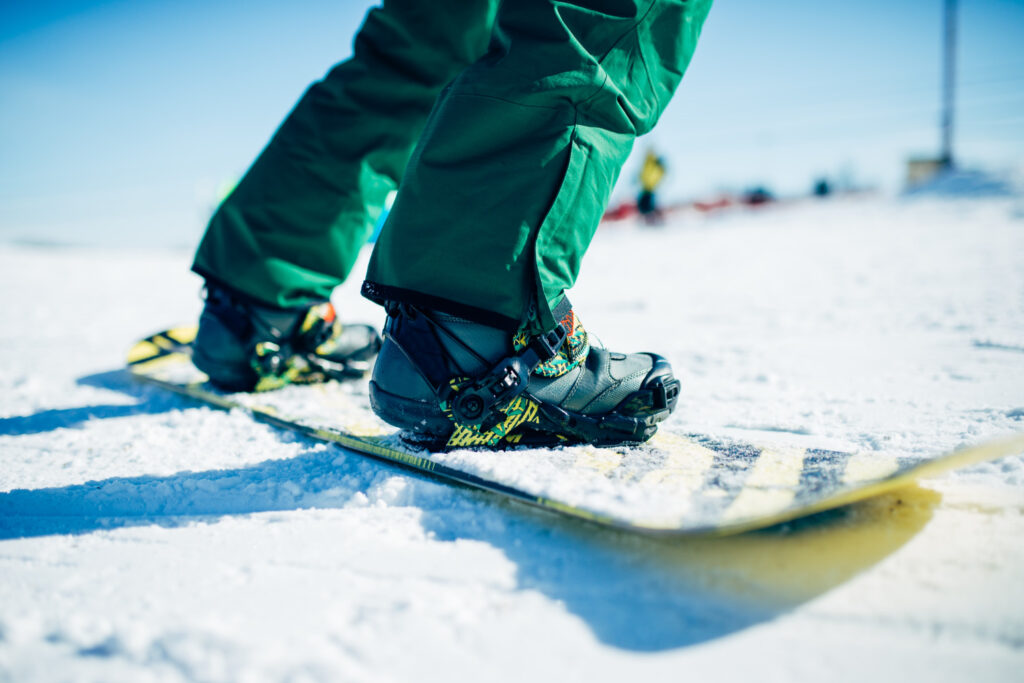Key Takeaways
- A “snowboarder’s fracture” affects the outer bone of the ankle (the talus), but you don’t have to be a snowboarder to get one.
- It can occur from slips, falls, or twisting injuries, common even in everyday life.
- Early diagnosis and proper ankle pain treatment help prevent long-term stiffness or arthritis.
- Treatment may include immobilisation, physiotherapy, or surgery, depending on fracture severity.
- Getting your ankle assessed early ensures safe healing and return to movement.
Not Just a Sports Injury
The term “snowboarder’s fracture” sounds like something that only happens on snowy mountains. But in reality, it can happen anywhere, from missing a step to twisting your ankle while jogging or slipping on wet ground.
The injury refers to a fracture of the lateral process of the talus, a small but critical bone that connects the leg to the foot. This bone plays a major role in ankle stability and weight bearing. When it breaks, pain and swelling on the outer side of the ankle can mimic a sprain, but the damage is often much deeper.
How It Happens
Originally named for snowboarders who land hard on their feet after a jump, this type of fracture happens when the foot suddenly twists outward or upward under force. But similar mechanisms occur in everyday life, especially on uneven surfaces or when wearing unstable footwear.
You might experience:
- Sudden pain on the outer ankle after a fall or twist
- Swelling and bruising
- Pain when bearing weight or rotating the ankle
- Tenderness near the heel bone rather than the ankle joint itself
Because the symptoms are similar to a severe ankle sprain, many patients dismiss it as a minor injury. That’s where the problem begins. Undiagnosed fractures can lead to improper healing, chronic pain, and even arthritis down the line.
Diagnosing a Snowboarder’s Fracture
If you have persistent ankle pain or swelling after an injury, it’s important to get checked by an orthopaedic specialist.
Diagnosis typically involves:
- Physical examination – To check pain points, swelling, and joint stability.
- X-rays – The first step to identify any fractures.
- CT or MRI scans – Used to confirm subtle fractures or joint surface damage that X-rays might miss.
Because the talus sits deep within the ankle, these fractures are often overlooked in early scans. Specialists familiar with ankle pain treatment in Singapore are trained to recognise the subtle signs and recommend further imaging if needed.
Treatment Options
The goal of treatment is to restore ankle alignment, relieve pain, and prevent long-term stiffness. The approach depends on the severity and displacement of the fracture.
1. Non-Surgical Treatment
For minor, stable fractures:
- The ankle is immobilised in a cast or walking boot for 6–8 weeks.
- Weight-bearing is gradually reintroduced under medical supervision.
- Physiotherapy follows to rebuild strength and flexibility.
2. Surgical Treatment
If the bone fragments are displaced or the joint surface is unstable, surgery may be recommended.
- The procedure involves repositioning and fixing the bone fragments using screws or plates.
- Surgery helps ensure the joint surfaces heal correctly and reduces the risk of post-traumatic arthritis.
At TOPS, surgeons often use minimally invasive techniques to shorten recovery time and support faster rehabilitation.
Recovery and Rehabilitation
Recovery after a snowboarder’s fracture takes time, but with proper care, most patients return to full activity.
- 6–8 weeks: Bone healing phase. Limited movement, gradual physiotherapy.
- 3 months: Progressive weight-bearing, strengthening, and balance training.
- 6 months and beyond: Full return to sports or normal activities once pain-free mobility is achieved.
Rehabilitation focuses on restoring range of motion, muscle balance, and confidence in movement, key to preventing re-injury.
Why Early Ankle Pain Treatment Is Important
Ignoring ankle pain after a fall or twist can lead to lasting problems.
Without proper diagnosis and treatment, even small fractures can result in:
- Chronic instability
- Persistent pain
- Loss of ankle motion
- Early onset of arthritis
Whether you’re an athlete, a weekend hiker, or simply someone who took a bad step off the curb, early assessment makes all the difference.
FAQs About Snowboarders’ Fracture and Ankle Pain Treatment
1. Can you get a snowboarder’s fracture even if you’ve never snowboarded?
Yes. Despite the name, this fracture can occur from any twisting or impact injury to the ankle, common during daily activities or sports.
2. How do I know if my ankle pain is just a sprain or a fracture?
Sprains affect ligaments, while fractures involve bone. If swelling and pain persist beyond a few days, or you can’t bear weight, it’s best to get an X-ray or CT scan to rule out a fracture.
3. How long does recovery take after a snowboarder’s fracture surgery?
Recovery usually takes 3–6 months, depending on the severity of the injury and the patient’s overall health. Physiotherapy is essential for full recovery.
4. Is ankle pain treatment different for athletes and non-athletes?
The treatment principles are the same: rest, immobilisation, and gradual rehabilitation. However, active individuals may have a more structured return-to-sport plan.
5. When should I see an orthopaedic specialist in Singapore?
See a doctor if your ankle pain lasts more than a few days, if you experience severe swelling or bruising, or if walking remains difficult. Early diagnosis ensures a smoother recovery.
Don’t Ignore That “Simple” Ankle Pain
A snowboarder’s fracture can happen anywhere, not just on the slopes. If you’ve twisted your ankle and the pain isn’t improving, it’s time to get it checked.
At The Orthopaedic Practice and Surgery (TOPS), our team of orthopaedic surgeons provides comprehensive ankle pain treatment in Singapore, from accurate diagnosis to post-recovery care.












